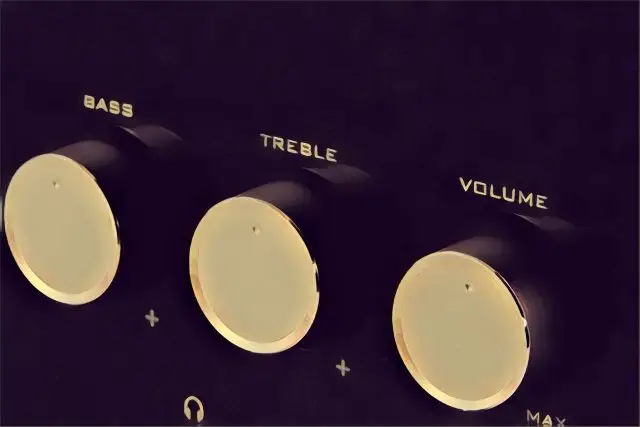Gain and volume. When it comes to producing music we’ve all heard those terms, and kinda know what they mean. It’s all about loudness, right?
Yes. And no.
Understanding the differences between gain and volume, and more importantly learning how to use them, can really help elevate your mixing game. And if there’s one thing we want at eMastered it’s to help you get better at all things music production.
So hop onboard the Gain Train as we head out to Volume-Ville. All aboard? Toot-toot!
What is Volume?
Let's start off with the easiest thing to define in the gain vs volume debate: volume.
Volume refers to the output, measured in decibels, of a sound system. In this definition, a sound system can be anything that produces a noise with no further processing added; a car stereo; an airplane; your dog. Or, the stereo output of your DAW .
To put it more crudely, it's the loudness you hear coming out of something. What's important to note is that volume affects only the output level (or loudness), not the tone or character of a sound. Volume controls only the finished product after all processing has been applied.
Something that will be helpful to keep in mind as we venture further into the discussion is that sound systems can be entire mixes controlled by a master fader, or discrete entities, such as a channel strip within a mixer.
What is Gain?
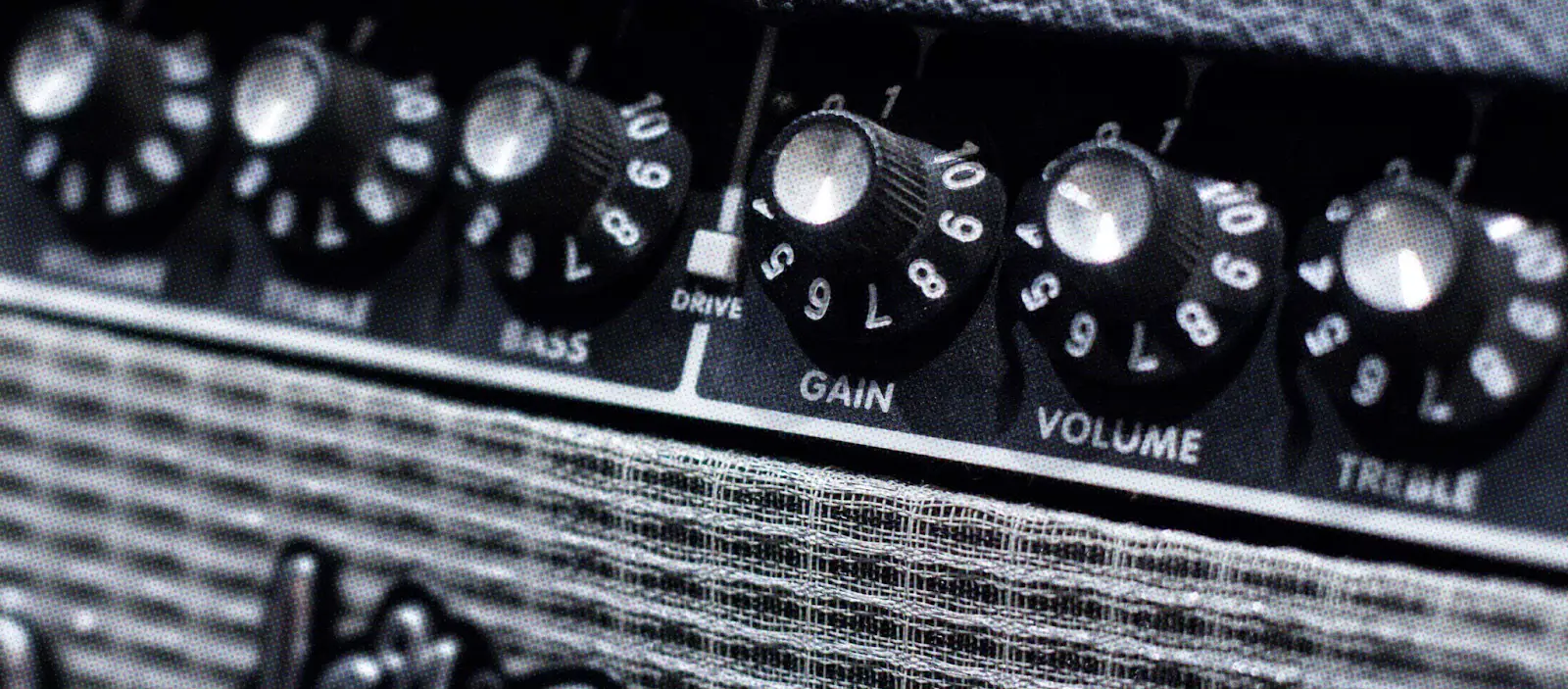
On the flip side, gain can loosely be described as the input level of an audio signal occurring before any processing has taken place. Or, the volume of something at the input stage of a signal path
But it's a little more complicated to define than that. This is partly because in music production, digital plugins often emulate the analog tech of yore while also introducing their own concepts, leading to differences in definition.
Gain in the Analog Era
In the glory days of yesteryear when everything was recorded on tape, gain was used in one of two ways:
Microphone Preamps
Microphones record at a low level, so mic preamps are used to boost the signal. With analog gear turning up the gain at the microphone preamp stage altered how the electronic gubbins in the recording console would affect the incoming signal. This is the 'analog warmth' so many people crave like their morning coffee.
Guitar Amps
My old friend the guitar amp. Most guitar amps have both a gain knob and a volume knob, and while it's true that both affect the output volume they function in different ways.
Turning up the gain level on a guitar amplifier will gradually increase the volume of the incoming signal, eventually causing it to overload the amp. That's how guitar distortion was discovered.
Turning the volume control, or master volume knob, will only affect how loud the signal is at the output stage.
In this way you can create a heavily distorted signal but keep the overall volume low. (But why would you do that, unless you're Nickelback?)
Gain in Modern Digital Recording
In digital music production the terms gain and volume are sometimes used interchangeably.
Take for example a software compressor with a 'makeup gain' control. It's actually the end of the signal chain for this particular audio system (the compressor), so rather than being a gain knob it's more of a volume control.
To complicate things further, a technically more accurate description of gain is the ratio between the output and input amplitudes in an audio system.
Potato, potahto. So long as you understand what the control is actually, well, controlling, and where it happens on the signal path, you'll be OK.
Because while gain and volume both affect the volume level of a signal, adjusting the input gain on something can radically affect the sound quality in terms of tone and character.
Gain and Volume in Orchestral Plugins
If you make use of MIDI CC messages to control software instruments in your music production you'll be familiar with CC 11 - expression. This functions as a volume knob within the instrument, controlling how loud the instrument is.
In some orchestral instrument plugins you may come across a 'dynamics' control in addition to an expression control. Orchestral instruments have different tonal qualities when played at different volumes, and in an effort to make software instruments more musically playable some developers include a dynamics function that controls tone.
It's like an acoustic version of gain (dynamics) and volume (expression) .
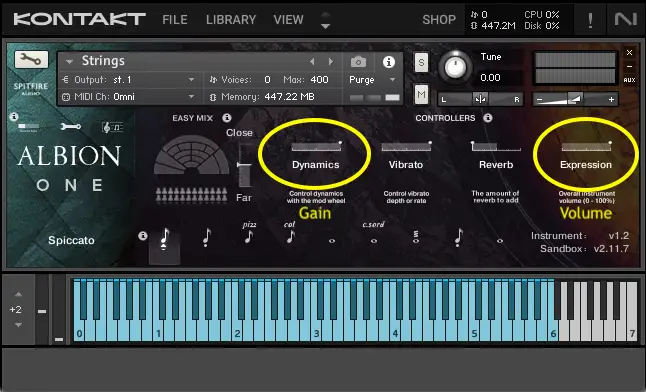
Gain vs Volume: The Key Difference
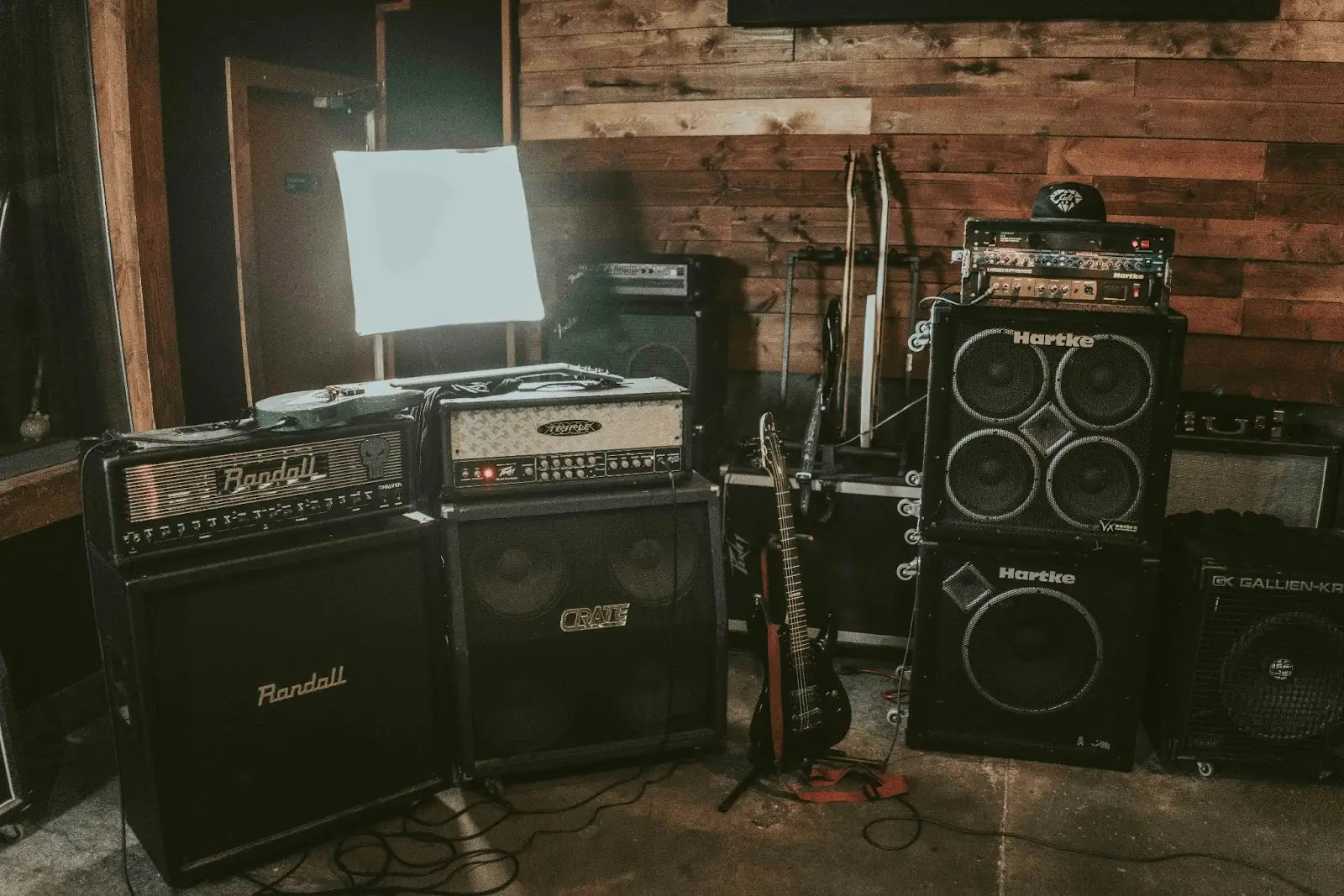
Just to make sure we're super-clear on this, let's go over it once more, with feeling...
Gain refers to the strength of an input signal, affecting audio quality via the intensity of signal. Volume refers to the output of an audio signal path, and controls loudness of a given signal in decibels..
Think about how different someone's voice sounds when they shout or whisper, compared to speaking normally. The 'audio gain' of their voice is much higher (shouting) or lower (whispering ) than normal, affecting the tonal quality.
Obviously in the acoustic world there's a significant volume increase between these two extremes, but even at a comparable decibel level (when someone is shouting in the distance, for instance) the difference in tonal quality is noticeable.
Gain controls the loudness and tonality of a signal going in. Volume affects the perceived loudness of a signal coming out.
Now that we're clear on the differences between volume and gain, let's take a closer look at how, and when, to use each.
How to Use Volume While Recording & Mixing
When recording an external instrument with a volume control set it at maximum loudness. Then leave it.
You should only be adjusting the volume of a signal for monitoring purposes. Whether it’s a headphone mix for a singer, or the monitor mix in the control room, adjust this from the mixer using the faders.
Otherwise, keep the faders of the input channel at unity gain.
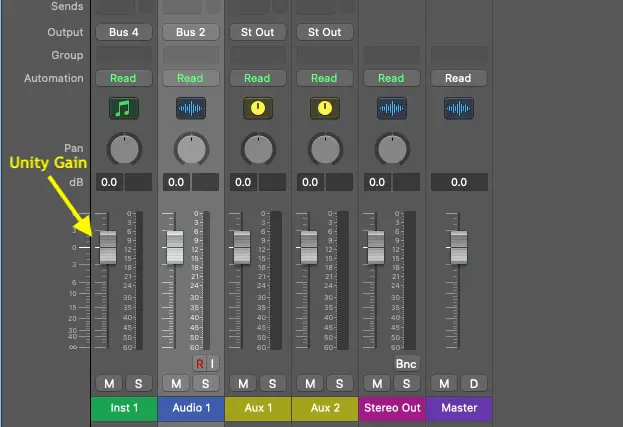
If you’re mixing a live band you’ll obviously want to adjust the volume of each fader to get a tasty mix.
Either way, remember that faders have more sensitivity closer to unity (0db), so the stronger your input signals, the more control you’ll have over the mix in general.
How to Use Gain While Recording & Mixing
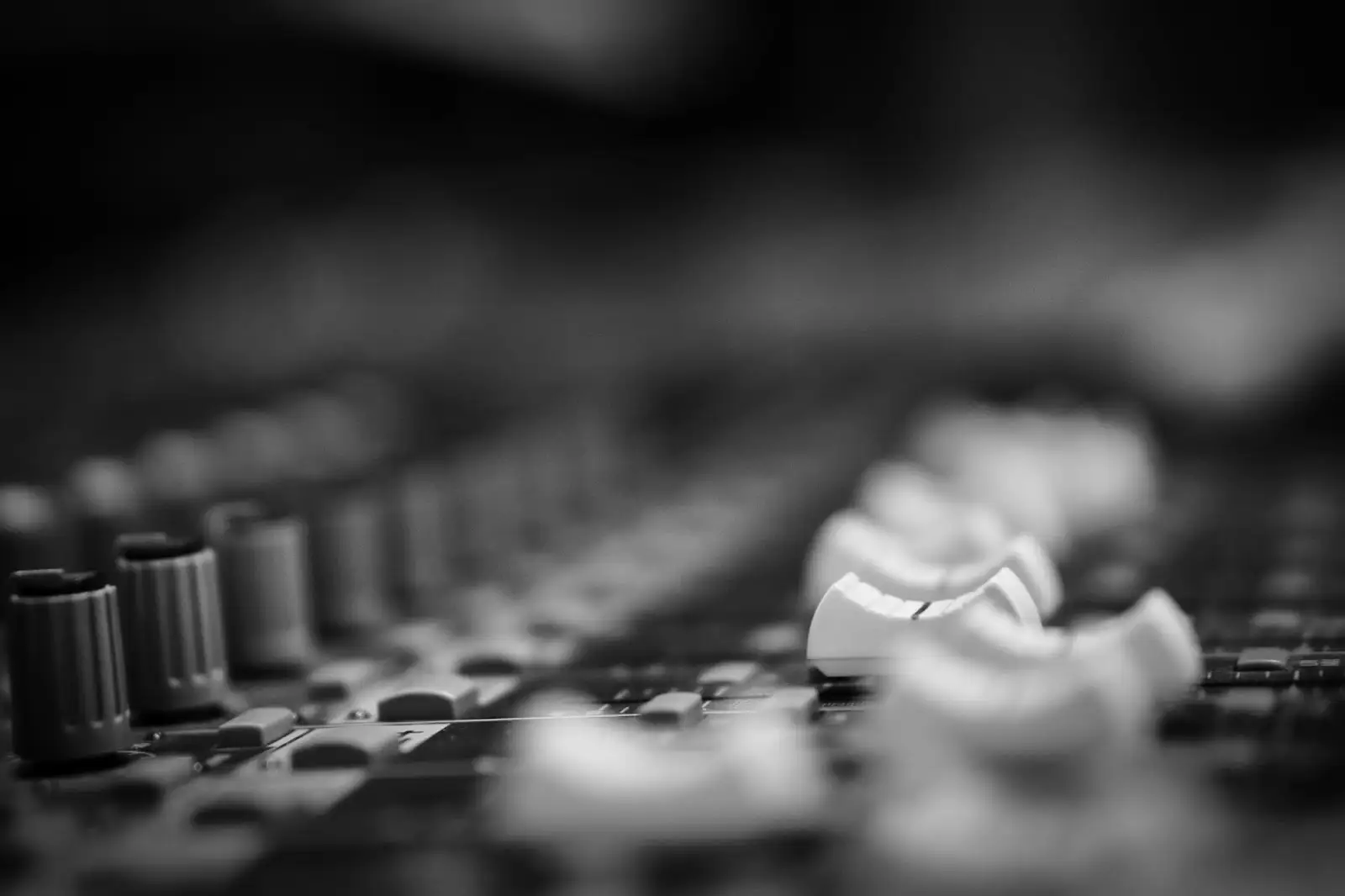
Use the input gain knobs on your audio interface or mixer to boost a quiet signal, or adjust gain on an overpowering one.
A microphone’s signal is very quiet, and to get an acceptable noise floor you’ll need to adjust the input gain on that channel. On the other hand a synth may be wacky loud so you'll want to turn the gain down.
Aim for an average signal of -18dB to -10dB on the channel meter. Try to avoid any peaks over -6dB, and if you see things going into the red, back off! You want to avoid any kind of clipping when it comes to digital audio.
If you’re doing live audio engineering, use the gain knobs to get a clean, strong signal from each instrument or mic so you have lots of control available at the fader.
Gain Staging
All the above leads us neatly onto the final topic. Gain staging is putting into practice all your knowledge about the differences between gain and volume, and getting the cleanest sound across the entire processing system.
Without proper gain staging a very quiet signal will introduce lots of unwanted noise into your mix. Signals that were recorded hot will clip after passing through processing. Trust me, it'll just be a headache.
A gain stage is any point in an audio signal path where the overall level can be modified; the output volume of the instrument; the distortion pedal it's passing through; the plugins on the channel strip.
During recording, gain staging involves maintaining a good signal to noise ratio. With today's 24-bit converter quality technology the AD/DA conversion process means you no longer have to record hot, so go easy and avoid any potential clipping!
During mixing be aware that any processing applied will affect the signal level. If you've applied some EQ cuts to remove unwanted frequencies for example, you'll need to compensate for the volume lost through the cuts. A lot of plugins have volume/gain controls to help with this.
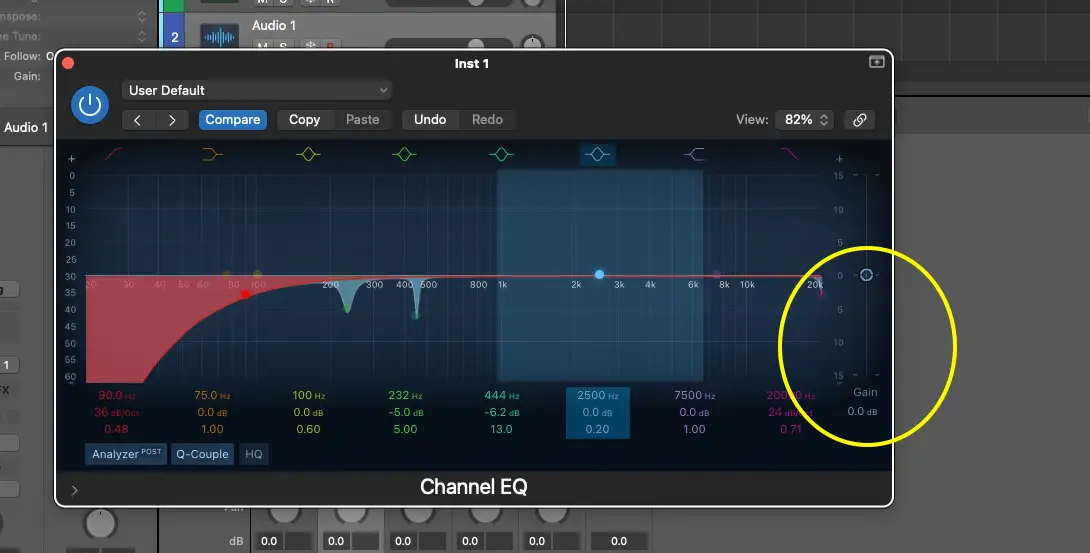
Gain staging is a hugely important aspect of the recording and mixing process - it's well worth learning more about it . But I'm ready for a cuppa, and MacGyver is about to start. So go forth, and maketh the music!


